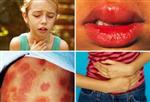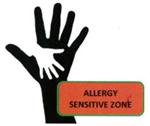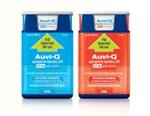- Missoula County Public Schools
- Life-Threatening Allergies
MCPS Allergy Information
Allergy Resources
-
- Food Allergy Awareness for ALL Parents (video)
- Food Allergy Challenges: A guide for parents and families
- Food Allergy Facts and Myths by Allergy Home.org. (video)
- Food Allergy Tips for PTAs
- How a Child Might Describe a Reaction
- How to Read a Food Label
- Montana Code Annotated 20-5-421 Emergency use of Epinephrine in the School Setting
- Montana Code Annotated 20-5-420 Self-administration or Possession of Asthma, Severe Allergy, or
- Understanding Labels by Allergy Home
Life Threatening Allergies and Anaphylaxis
-
What is an allergy?An allergy occurs when a person's immune system reacts to a substance that is harmless for most people. These usually harmless substances are called allergens. Common allergies include dust mites, pollens, animals, insects, foods, medications and latex. In an "IgE mediated" allergy, the immune system overreacts and produces substances (antibodies) that "fight" the intruder (allergen). Those antibodies cause the body to release chemicals, including histamine, causing an allergic reaction.
What is anaphylaxis?
Anaphylaxis, the most severe type of allergic reaction, refers to a collection of symptoms affecting multiple systems of the body. The most dangerous symptoms include breathing difficulties and a drop in blood pressure or shock, which are potentially fatal. The onset of these symptoms is most commonly immediate, although may be delayed by hours. However, every child is different and some students will develop gastro-intestinal symptoms before any other symptoms develop. Common examples of potentially life threatening allergies are those to foods and stinging insects, although these reactions may also occur to medication or latex rubber and in rare cases association with exercise.
Important Information
What are symptoms of an allergic reaction?
An allergic reaction can range from very mild to life threatening. Seasonal allergies, often called hay fever, may cause a runny nose or itchy eyes. Life threatening reactions are called anaphylaxis (pronounced an-a-fi-LAK-sis). Anaphylaxis can occur from stinging or biting insects, medication, foods or latex. Allergy to foods are increasing; the American Academy of Asthma, Allergy and Immunology (AAAAI,2014) report that it is currently estimated that 8-9% of school age children have at least one food allergy.Symptoms of anaphylaxis can include ANY of the following:- Mouth: Itchy, swelling of tongue and/or lips
- Throat: Itchy, tightness/closure, hoarseness, trouble breathing/swallowing

- Skin: Itchy, hives, redness, swelling, red watery eyes
- Gut: Nausea, vomiting, cramps, diarrhea
- Lung: Short of breath, wheeze, repetitive cough
- Heart: Pale or blue skin color, dizzy/faint, weak pulse
- Neurological: Sense of "impending doom", irritability, change in alertness, mood change, confusion
- Other: Itchy, red, watery eyes
What foods can cause anaphylaxis?
The Food Allergy Research and Education Organization (FARE, 2014) reports that "although nearly any food can cause an allergic reaction, 90 percent of all food-allergic reactions are caused by one of eight foods in the United States. These foods are: peanuts, tree nuts, milk, egg, wheat, soy, fish and shellfish". Milk, egg, soy, wheat and peanuts are the most common food allergies in children.How are Life Threatening Allergies treated?
While some people "grow out" of certain allergies, many do not. Some allergies may be treated by giving "de-sensitizing shots" which over time decrease the allergic reaction to that allergen. However, sensitizing shots are not currently available for many kinds of allergies.
It is important to prevent allergic reactions by avoiding the allergen. For food allergies, this usually means not eating the food. However, it can be difficult to not accidently eat the food or get the food onto a lip, nose or eye where a reaction could result. Students with food allergies need a caring and supporting school community to stay safe. Some students may need "allergen sensitive zones". Your child may bring home a letter asking that certain foods not be brought into the classroom. You may see signs at classroom doors asking that certain foods not be brought into the classroom. Please help all children by looking for signs with the hand icon. Please do not provide candy or other food to any child unless specifically allowed by the classroom teacher. Because food allergies are increasing, you never know what child has an allergy and we want all children to be safe.It is important that anaphylaxis, if it occurs, is recognized and treated quickly. Epinephrine is the "first-line" medication to treat anaphylaxis. If your child has a diagnosed life threatening allergy, it is your responsibility to provide an epinephrine auto injector for school use including for field trips or after school activities. Two common brands of auto injectors are Epipen® or Auvi-Q®.
supporting school community to stay safe. Some students may need "allergen sensitive zones". Your child may bring home a letter asking that certain foods not be brought into the classroom. You may see signs at classroom doors asking that certain foods not be brought into the classroom. Please help all children by looking for signs with the hand icon. Please do not provide candy or other food to any child unless specifically allowed by the classroom teacher. Because food allergies are increasing, you never know what child has an allergy and we want all children to be safe.It is important that anaphylaxis, if it occurs, is recognized and treated quickly. Epinephrine is the "first-line" medication to treat anaphylaxis. If your child has a diagnosed life threatening allergy, it is your responsibility to provide an epinephrine auto injector for school use including for field trips or after school activities. Two common brands of auto injectors are Epipen® or Auvi-Q®.
 APPLICABLE TO ALL STUDENTS
APPLICABLE TO ALL STUDENTS
Each district school may maintain a stock supply of auto-injectable epinephrine to be administered immediately for actual or perceived anaphylaxis (life threatening allergic reaction) in any student by a school nurse or other authorized personnel in accordance with Montana law (MCA § 20-5-421) and district medication policy 3416. 911 will be summoned and then parents will be notified immediately following all administration of epinephrine. The limited stock of this medication is not intended to be used in place of medications previously or currently prescribed for specific students or staff with known allergies. Students with known allergies are expected to continue to provide their own health care provider ordered medications and written individual annual anaphylaxis plan. What is food intolerance?Food intolerance doesn't involve an immune system response and is typically caused by a lack of a digestive enzyme. An example of this is lactose intolerance. The symptoms of food intolerance are not life threatening but cause physical symptoms such as bloating, abdominal pain or headaches. (National School Board Association, Safe at School and Ready to Learn, 2012). If your child has a food intolerance and needs food substitutions for school provided meals, use this Diet Request Form (Diet Request Form ada). Take this form to your child's healthcare provider to complete and bring the completed from to the school or send directly to the Food and Nutrition Services Supervisor, 915 South Ave. West, Missoula, MT 59801. If you have questions regarding food substitutions, you may call (406)728-2400, ext. 3023.Missoula County Public Schools has detailed administrative procedures and uses selected resources.
They were developed to support the following goals of allergy management:- To maintain the health and protect the safety of children who have life threatening allergies in ways that are developmentally appropriate, promote self-advocacy and competence in self-care and provide appropriate educational opportunities.
- To ensure that interventions and accommodations outlined in individual health care plans and accommodation plans are based on medically accurate information and evidence based practices.
- To define a formal process for identifying, managing and ensuring continuity of care for students with life-threatening allergies across all transitions. (PK-12)
If your child has a life threatening allergy, please review the available resources. Contact your school principal or school nurse. If you have further questions or concerns, you may call the Health Services Supervisor (406)728-2400, ext. 1073.

